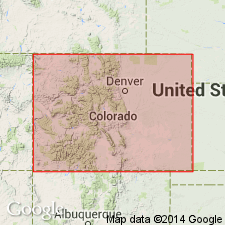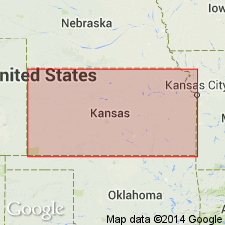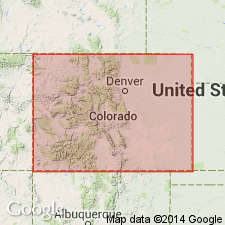
- Usage in publication:
-
- Huntsman [member]
- Modifications:
-
- Overview
- AAPG geologic province:
-
- Denver basin
Summary:
Is middle [member] (of three) in Omadi [formation] at top of Dakota group in the Denver basin in northeastern CO, southeastern WY, and western NE. Chart (Plate 3) illustrates various nomenclatures for the basin. Chart was part of a paper titled "The Denver-Cheyenne Basin," presented by C. W. Sternberg and A. J. Crowley at Los Angeles A.A.P.G. meeting March 1952. Is shown between Cruise (below) and Gurley (above). Huntsman is shown correlative with unnamed unit between "J" sand (below) and "G" sand (above); unnamed unit between 3rd Dakota [sand] (below) and 2nd Dakota [sand] (above); and unnamed unit between Lower Muddy (below) and Upper Muddy (above).
Source: GNU records (USGS DDS-6; Denver GNULEX).

- Usage in publication:
-
- Huntsman shale member
- Modifications:
-
- First used
- Overview
- Dominant lithology:
-
- Shale
- AAPG geologic province:
-
- Las Animas arch
- Salina basin
- Central Kansas uplift
- Anadarko basin
Summary:
First used as middle member of Omadi formation of Dakota group in subsurface of KS in Salina basin, Central Kansas uplift, Anadarko basin, and Las Animas arch. Overlies Cruise sandstone member (new) of Omadi formation. Underlies Gurley sandstone member (new) of Omadi formation. Consists of greenish-gray to gray, noncalcareous, micaceous, clayey or silty shale; siderite pellets common, locally abundant. Thickness from less than 20 ft to about 90 ft. Is probably nonmarine, no fossils. Tentatively correlated with Janssen clay member of Dakota formation in north-central KS. Is assigned to Gulfian Series (Upper Cretaceous). Derivation of name not given [perhaps named for Huntsman, Cheyenne Co, NE].
Source: GNU records (USGS DDS-6; Denver GNULEX).

- Usage in publication:
-
- Huntsman Shale
- Modifications:
-
- Overview
- AAPG geologic province:
-
- Denver basin
Summary:
Used locally within Denver basin. Where "D" Sandstone is present, the lower part of Graneros Shale is locally called the Huntsman Shale. [Cannot have a formation within a formation; authors' intention was probably to consider both the "D" and Huntsman as informal units within the Graneros.] Stratigraphic chart (modified from MacKenzie, 1971, Mountain Geologist, v. 8, p. 91-131). Unconformably overlies Lower Cretaceous "J" Sandstone; underlies "D" Sandstone. Lower part shown (fig. 2) to correlate with Lower Cretaceous Mowry Shale [now considered Upper Cretaceous]. Assigned (fig. 2) Early and Late Cretaceous age.
Source: GNU records (USGS DDS-6; Denver GNULEX).
For more information, please contact Nancy Stamm, Geologic Names Committee Secretary.
Asterisk (*) indicates published by U.S. Geological Survey authors.
"No current usage" (†) implies that a name has been abandoned or has fallen into disuse. Former usage and, if known, replacement name given in parentheses ( ).
Slash (/) indicates name conflicts with nomenclatural guidelines (CSN, 1933; ACSN, 1961, 1970; NACSN, 1983, 2005, 2021). May be explained within brackets ([ ]).

